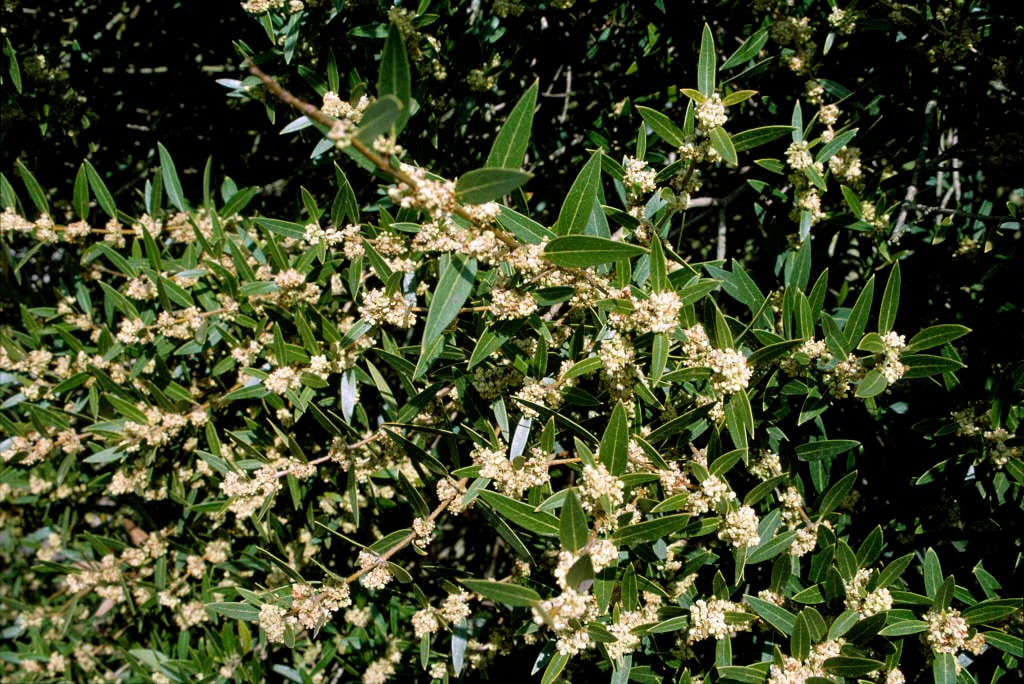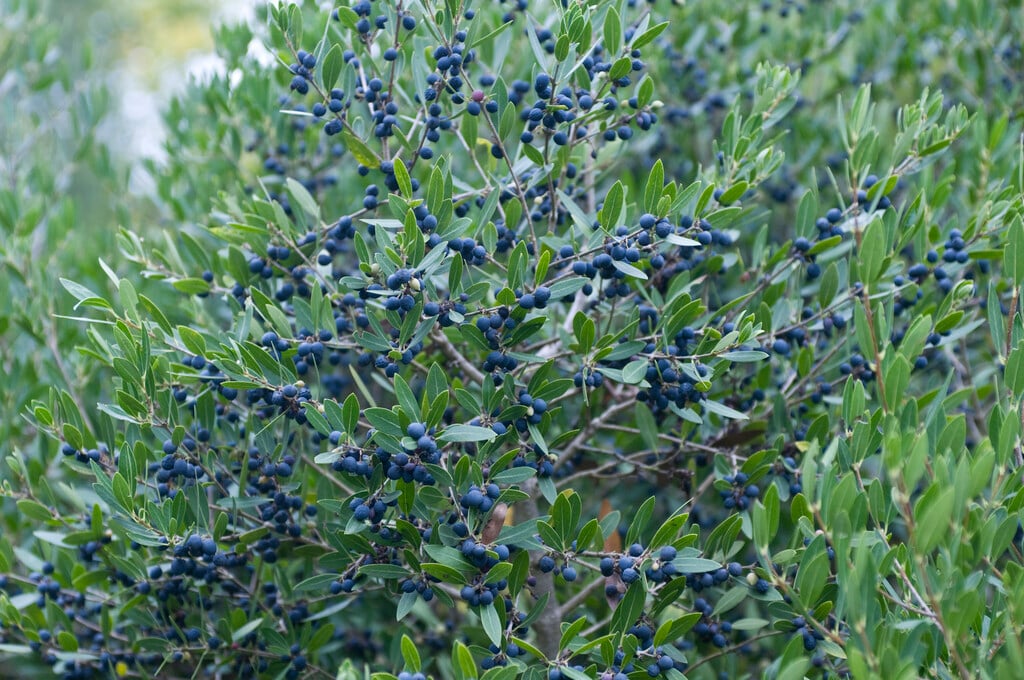Size
Ultimate height
2.5–4 metresTime to ultimate height
20–50 yearsUltimate spread
1.5–2.5 metresGrowing conditions
Moisture
Well–drainedpH
Acid, Alkaline, NeutralColour & scent
| Stem | Flower | Foliage | Fruit | |
| Spring | White | Green | ||
|---|---|---|---|---|
| Summer | White | Green | ||
| Autumn | Green | Black Purple | ||
| Winter | Green |
Position
- Full sun
- Partial shade
Aspect
South–facing
Exposure
Exposed or Sheltered Hardiness
H5Botanical details
- Family
- Oleaceae
- Native to GB / Ireland
- No
- Foliage
- Evergreen
- Habit
- Bushy
- Genus
Phillyrea are evergreen shrubs with simple, opposite, leathery leaves and small, often fragrant white flowers, followed by purple to black berries
- Name status
Correct
- Plant range
- Mediterranean
How to grow
Cultivation
Grow in fertile, well-drained soil, ideally in full sun, with shelter from cold, dry winds. Tolerates partial shade. Salt tolerant foliage suited to exposed coastal sites
Propagation
Semi-ripe cuttings with bottom heat in summer
Suggested planting locations and garden types
- Cottage and informal garden
- City and courtyard gardens
- Coastal
- Flower borders and beds
- Wall side borders
Pruning
Pruning group 1 and Pruning group 8. If grown as a hedge, clip in summer
Pests
May be susceptible to Phillyrea whitefly
Diseases
May be susceptible to honey fungus in gardens where it is present but insufficient data to determine degree of susceptibility
Get involved
The Royal Horticultural Society is the UK’s leading gardening charity. We aim to enrich everyone’s life through plants, and make the UK a greener and more beautiful place.

